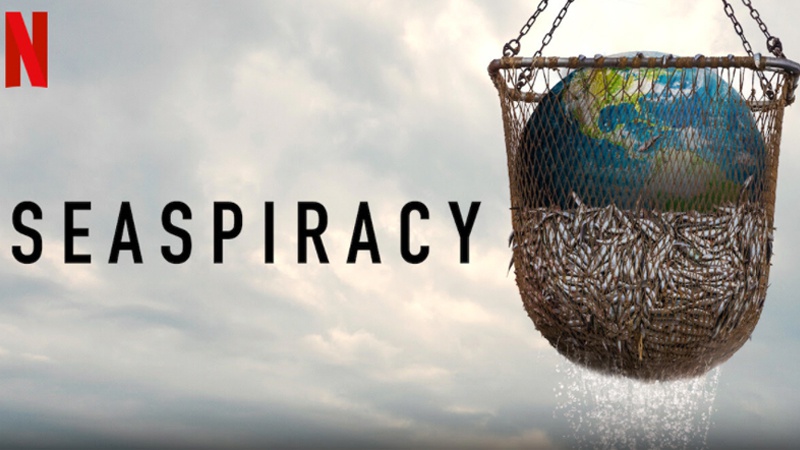With Earth Day approaching us, I decided the least thing I could do was to finally watch “Seaspiracy”, a Netflix documentary I kept seeing people promoting all over social media, commenting on how they never wanted to eat seafood again. Directed by environmentalist Ali Tabrizi, he investigates the threat overfishing brings to our oceans.
So I sat down to watch the documentary, not really thinking anything of it. Next thing I knew I was screaming “Noooo!” at the screen and arguing with my seafood-loving diet about what I would do.
Now, if you do not have time to watch a 90-minute documentary, or like me, do not want to watch and hear dolphins being killed, at least read some key takeaways from the film.
Protecting Sea Creatures Means Protecting Our Environment
“Seaspiracy” throws in many eye-opening statistics, including the fact that five million fish are captured per minute. Not only are fish important in the ocean’s food chains, but they are also vital in keeping corals alive. Marine plants alone absorb 20 times as much carbon as plants on land. The film also claims that if overfishing continues on with the same trajectory, oceans would be empty by 2048. While this exact year has been since stated as using outdated science since the documentary’s release, Tabrizi has made it clear that it does not matter which exact year our oceans are empty because the whole point he was trying to make was that our oceans will eventually be emptied.
Tabrizi points out that when whales and dolphins surface, the phytoplankton they fertilize absorb carbon dioxide. Phytoplankton are then eaten by zooplankton, which enables the carbon dioxide to sink further into the ocean. Basically, without whales and dolphins, we would be seeing much higher levels of carbon dioxide in the atmosphere. Seeing as the ocean stores 93% of the world’s carbon dioxide, it would make sense that we tried to take more care of it- but we don’t.
Aside from the fact that the ocean is the world’s largest carbon sink, another problem Tabrizi discovers is that even though we make a big deal out of plastics in our oceans, most of the material in the Pacific Garbage Patch, about 46% of it, is fishing equipment.
Bycatch
&
“Sustainability” Labels
Beyond just catching fish, nets also indirectly catch other animals such as sharks and dolphins, a term known as bycatch. Sometimes, animals caught as bycatch die before they can be released again and are simply thrown back into the ocean. The documentary shares that 50 million sharks are killed per year as bycatch.
Tabrizi wonders how fishing can be sustainable, so he interviews people working with the Dolphin Safe tuna labels and Marine Stewardship Council (MSC) labels that are there to ensure their product was caught without causing harm to other wildlife. In a series of interview clips, Tabrizi captures a shocking truth behind these sustainability labels: those companies are exploiting the problem of overfishing, using labels claiming to help to make money. Since the release of “Seaspiracy” though, companies have come out to say their comments were taken out of context.
Shrimp Slavery
The most shocking aspect of the documentary though is the fact that shrimp people everywhere are consuming is coming from the hands of slave labor. Tabrizi interviews workers in the shrimp industry who have managed to escape, whose identities are hidden in fear of getting captured by authorities who are covering the whole industry up.
In an interview in Bangkok, an old worker shares his experiences on the ships, sharing that the workers were abused, hit with iron bars, threatened with guns, and splashed with scorching hot water to be awakened. Even worse, workers who were killed had their bodies disposed of in the freezer. This abuse leads to workers who jump overboard, who would rather be dead than be forced to work in these conditions.
Alternate Options
Of course, after exposing all of these horrible aspects of the fishing industry, Tabrizi provides us with alternatives to seafood. He points out that the omega 3 fatty acids everyone associates with fish are actually from algae cells, so we really don’t need the fish at all and could consume plant-based solutions instead. He also states that there are many dioxins and other filthy chemicals entering our bodies through fish.
While some of the statistics shown in the documentary may have been outdated or exaggerated, the director’s point definitely got to me. If we continue to overfish at the same rate, climate change will continue to get worse and we will continue to deplete our oceans.
































